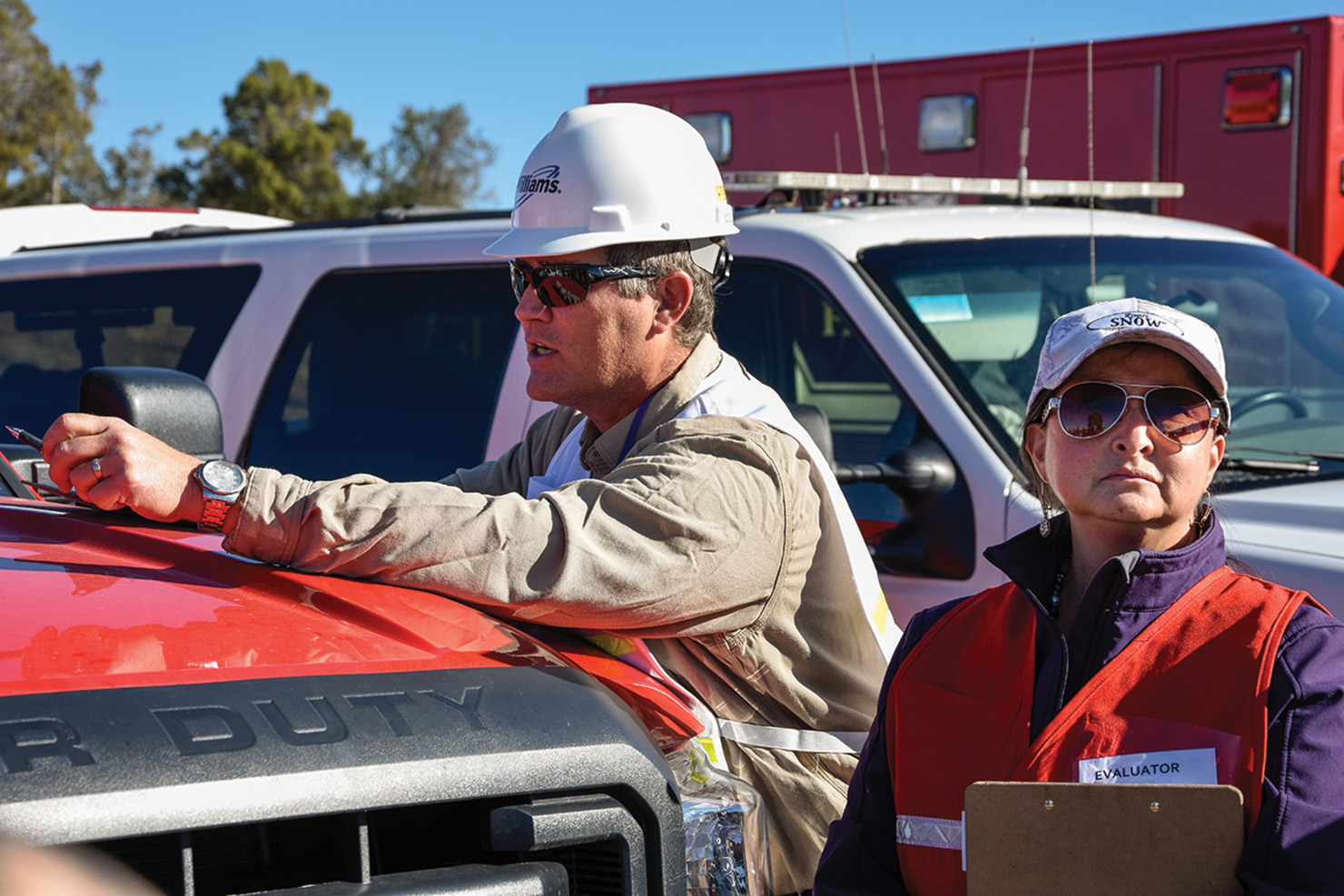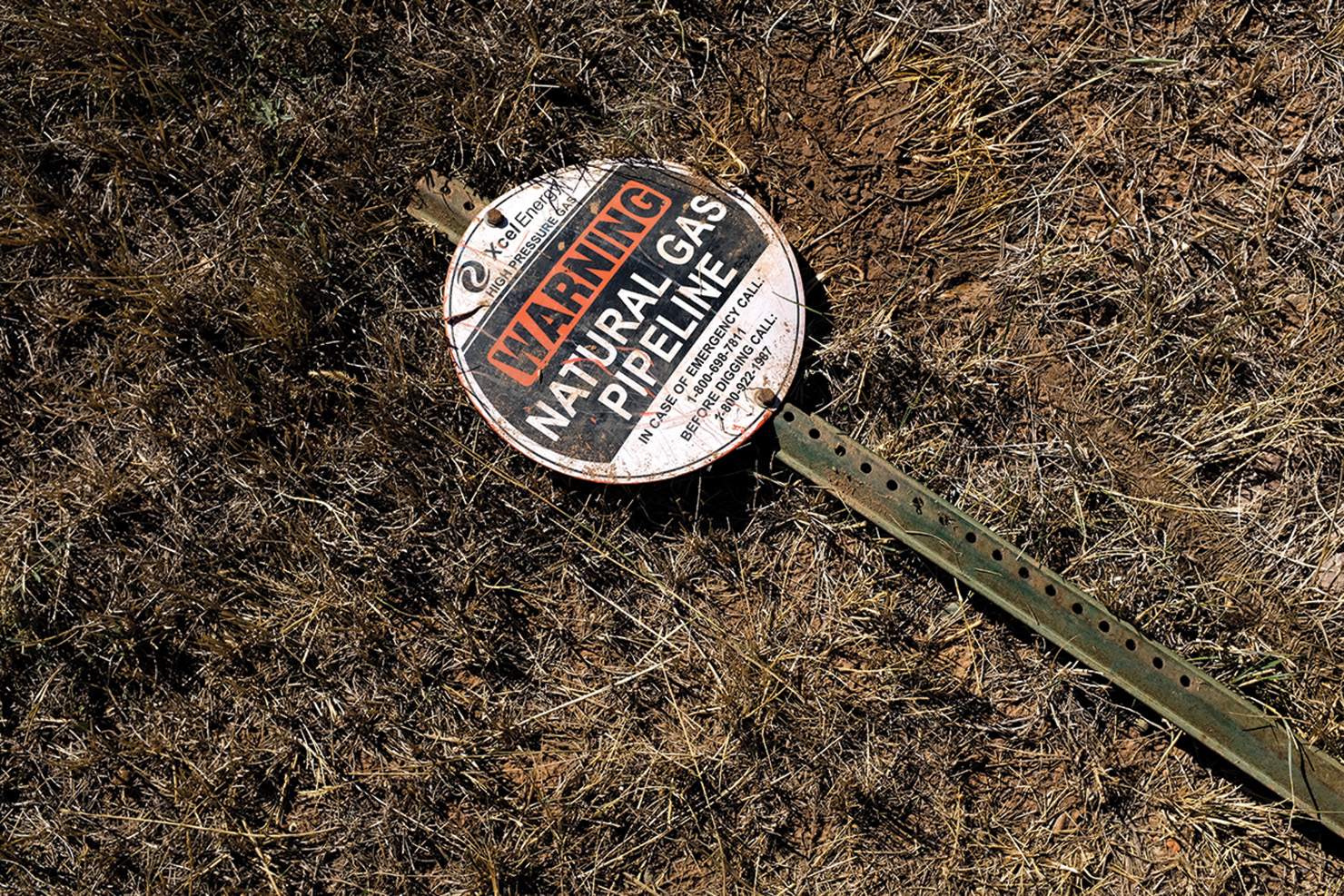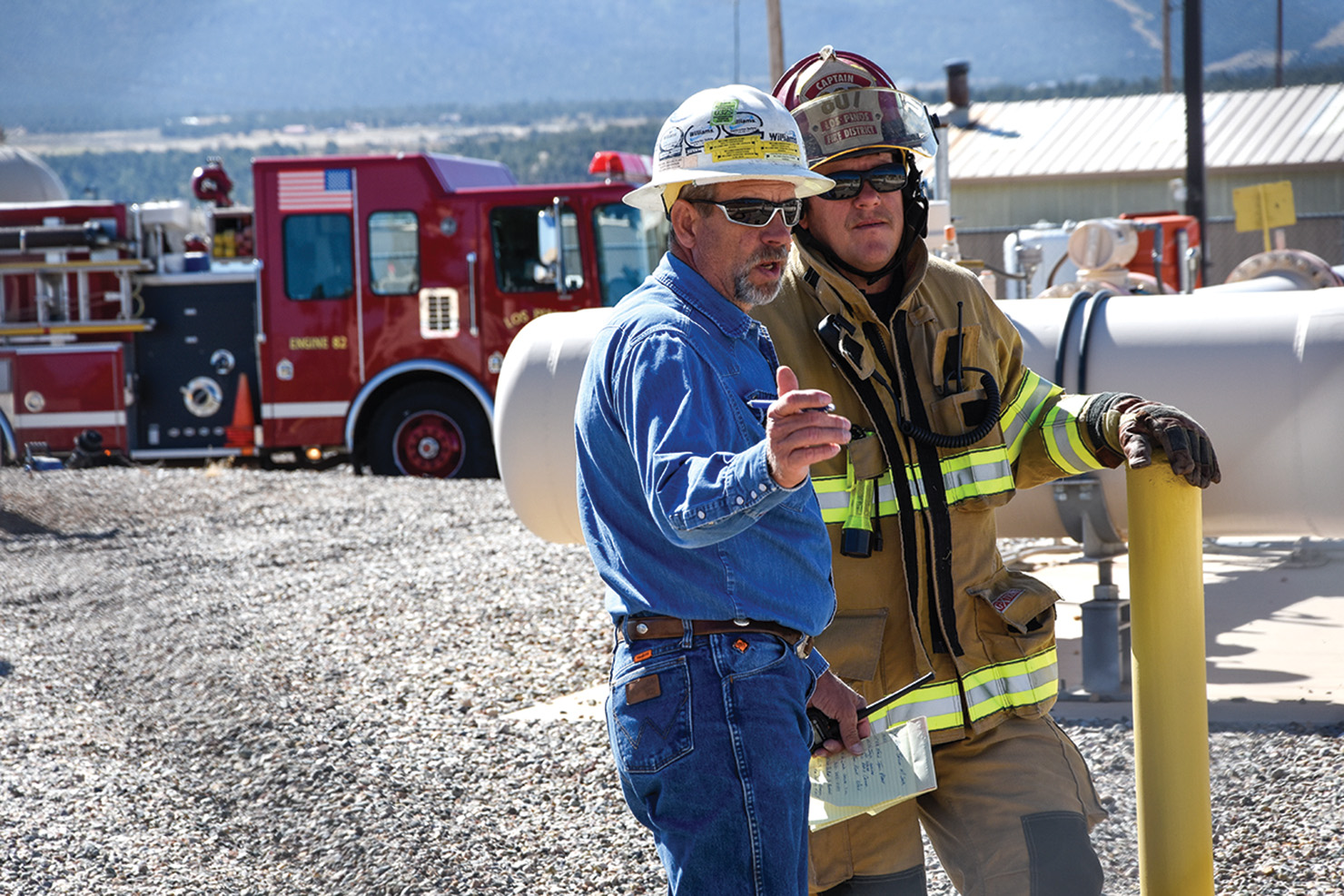The Williams-Ignacio Plant was the site of a mock emergency, following a theoretical explosion on Wednesday, Sept. 20. Williams implemented this interagency action drill in an effort to improve communication and response times between local authorities and the energy production facilities. “This drill is an opportunity to learn in a no fault environment,” said Tim Gott, Emergency Preparedness Specialist for Williams in charge of Wednesday’s on site exercise.
The scope and scale of the drill was impressive; the half day training exercise incorporated numerous agencies, and energy operators including: Los Pinos Fire, Durango Fire & Rescue, Ignacio Police Dept., Southern Ute Tribal Rangers, SUPD, The Southern Ute Indian Tribe, Red Cedar, Red Willow, BP, Trans Western, Kinder Morgan, and La Plata County emergency response coordinators. “We are trying to make this as real as possible,” Williams Operations Technician, Jack Ellis said. The Southern Ute Indian Tribe’s Incident Commander, Germaine Ewing, was on site to oversee the operation and ascertain where improvements could be made for future scenarios. Ewing is also the Division Head for the Tribe’s Lands Division.
“We are trying to get the best information possible to determine the best response,” Ewing said. The interagency effort was focused on response time and communication according to Ewing. “Everyone has a significant role in this.”
Following an early morning briefing by the management team, the scenario was set in action with a single report of suspicious activity. This was quickly followed by another radio report, citing an explosion within the natural gas production facility at the Williams-Ignacio Plant for the purposes of the simulation. Emergency crews responded, evacuation procedures commenced and a set of police road blocks were put in place. Everyone had a role; whether inside the plant, or on the periphery.
Williams’ Tim Gott outlined the specific objectives associated with organizing a large exercise of this nature. Objective one; testing of all emergency response plans and how they integrate into a larger consolidated plan for all the operators in the area. Objective two; understanding the roles and responsibilities during a large scale event. Objective 3; testing the evacuation process at the plant, headcount and accountability. Objective 4; testing the interoperability capabilities between multiple agencies.
In the “after-action” hotwash that followed the drill, Gott cited communications as the challenge area for improvement; also commending those involved on how well they handled it under these circumstances, which were created as part of the emergency drill. The target is to ensure an on site training exercise of this size and scale takes place very three years, he said.










